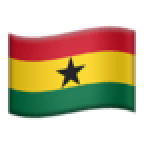Aside the joy, food and drinks that fill the ceremony, the other factor that graces the outstanding occasion is the wedding attire. These outfits are unique and they have special traditional meanings attached.
Here is how these 6 major ethnic groups on the continent dress up for the occasion.
Zulu
This ethnic group is from the KwaZulu-Natal province in South Africa. The traditional marriage, umabo, takes place after the white wedding and the lobola (bride price) has been paid. During the umabo, the bride wears isidwaba, a leather skirt, isicwaya, a skin to cover her breasts, and inkehli, a hat to cover her head. She also puts on colourful beads.
The groom wears ibheshu, a covering made from calfskin. If he wants to wear pants, then he must wear umblaselo, pants brightly decorated with beads. He must also not forget his traditional headband.
Yoruba
During the Yoruba traditional wedding, the bride wears gele, a headscarf, buba, a blouse, and ‘iro’, a wrapper tied around her waist. She adds accessories like gold earrings, necklace, beads and bangles.
The groom wears an agbada, a traditional four-piece suit and fila, a Yoruba traditional cap. The colour of the woman’s attire must complement the theme colour for the wedding and the man’s outfit must reflect that as well.
Efik
This is a minority tribe in southern Nigeria with a traditional wedding attire so unique from other cultures.
First, the bride wears Ofong Ukod Anwang, an attire which includes a knee length skirt, blouse (usually covering only the bust) with decorated beads, and the second attire “the Onyonyo”, a big long flowing gown. She also wears over-the-top hairpins and carries a decorated staff.
The groom wears the Usobo, a white shirt with colourful wrappers. He also puts on a beaded jacket, beaded shoes and a hat. He must not forget to hang a long piece of cloth (the Okpomkpomon) around his neck.
Kikuyu
Ngurario is the traditional wedding for this ethnic group in Kenya. During the wedding, the bride pays the ceremony called “ruracio”. Back in the days, the bride’s wedding attire was made from goatskin and decorated with cowrie shell but now, the goatskin has been replaced by a brown or maroon fabric but the cowrie shells have been maintained.
The bride wears nyori, a headband with huge hoop earrings that settle on the top of her ears as well as mido, earrings in the holes of her earlobe.
The groom wears a headgear made of sheepskin, a maroon or brown fabric across his chest. The groom will be decorated with a beaded necklace, a necklace made from cowrie shell, a fly whisk and sheathed blade.
Other brides prefer to wear Ankara or Kitenge attires for a classier appearance.
Oromo
An ethnic group from Ethiopia which often engages in arranged marriages known as “Kadhaa or Naqataa”. The bride and the groom wear traditional attire that is hand-woven from pure cotton and decorated with Oromo prints. The bride normally put on the “Habesha wedding dress”, which is accompanied by “Habesha jewellery” while the groom wears “Buffalaa-Uffannaa Gaa’elaa”, which is their popular wedding attire.
Ashanti
This ethnic group is located in central Ghana and the traditional marriage is “a knocking” ceremony “kokooko”. The groom and his family go to the bride’s family to ask for their daughter’s hand in marriage. The marriage ceremony takes place right after the two families agrees. The bride and groom wear colourful attire made from the rich “Kente cloth”. The bride adds other accessories including colourful beads and head decorations.


&format=jpeg)
&format=jpeg)
&format=jpeg)